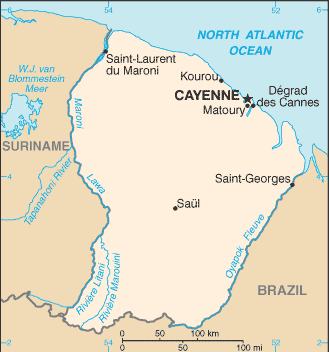By NewsDesk @bactiman63
French health authorities reported 13 laboratory-confirmed cases of Mayaro fever in French Guiana earlier this month.

According to the World Health Organization, in September 2020, the Institut Pasteur de la Guyane (IPG) identified two cases of Mayaro virus infection (MAYV) confirmed by reverse transcriptase polymerase chain reaction (RT-PCR) and one probable case found positive for Mayaro antibodies.
Additional confirmed cases of Mayaro fever were reported after a retrospective search on samples collected between 15 July and 15 September. In total (including the first detections and retrospective search) IPG identified 11 cases of Mayaro fever by RT-PCR out of 79 samples tested. These cases were reported on 21 September 2020.
Two additional confirmed cases of Mayaro fever were reported in early October by the Institute Pasteur de la Guyane in Cayenne, leading to a total of 13 confirmed cases among 97 tested samples between 15 July and early October. The onset of symptoms for the 13 confirmed cases ranged from 18 July to 29 September 2020. Of the 13 confirmed cases, 11 lived in the urban coastal area including nine from Cayenne area (Cayenne: 1, Rémire: 4, Matoury: 4), one from Kourou, and one from Montsinery-Tonnegrande. Only two cases lived in a rural/sylvatic area, both in Roura (including one in the village of Cacao, located further in the interior).
French Guiana: Oropouche virus outbreak reported, 1st cases in the country
French Guiana has seen circulation of Mayaro for more than 20 years reporting 1 to 3 confirmed cases annually in recent years. Detection of 13 confirmed cases within less than 3 months is thus unusual.
MAYV is an arthropod-borne virus (arbovirus) that can cause Mayaro fever.
Disease may can include 4 days of viremia, a rash that may appear after a 3-5 day fever, headache, photophobia, inguinal lymphadenopathy, myalgia, vomiting, diarrhea and arthralgia, which can affect ankles, wrists and toes and less often, other joints. Joint pain may continue for weeks and maybe very painful.
Disease is clinically similar to that due to primary dengue virus or chikungunya virus infection. MAYV was first described in 1954 after its discovery in in Mayaro County, Trinidad.


One thought on “Mayaro virus: 13 confirmed cases reported in French Guiana”